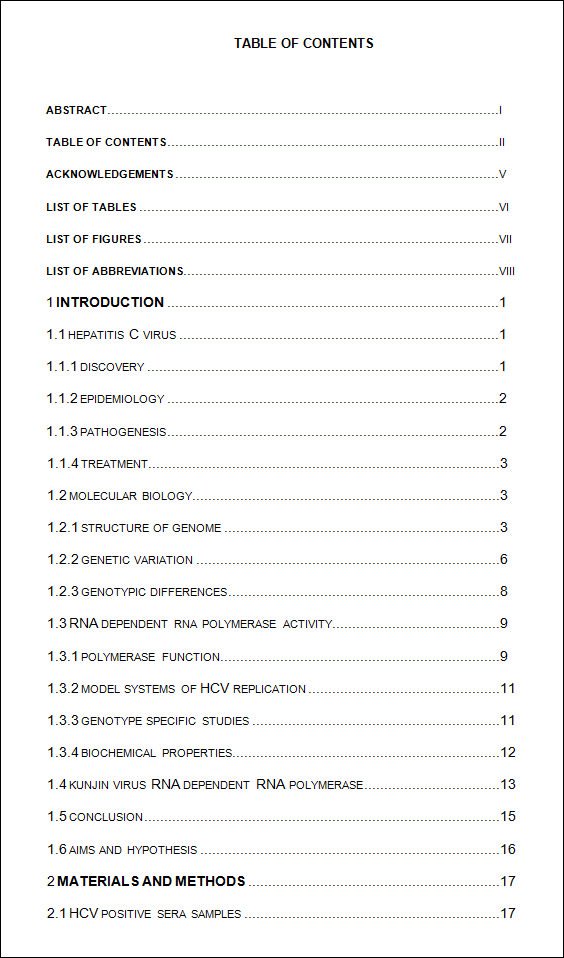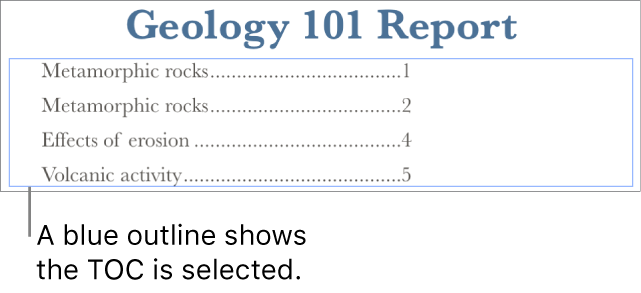Pages For Mac Table Of Contents
- Printable Table Of Contents Page
- Pages For Mac Table Of Contents Format
- Pages For Mac Table Of Contents Printable
Hi T.Ellis,
There are limited options for formatting a table of contents. There is a way to give the appearance that you want, but it will lose functionality.
As in many modern RAW-converters, Lightroom uses the principle of nondestructive editing. Lightroom’s functionality includes not only a RAW converter and image processing tools, but also a powerful photo cataloging system, as well as tools for creating slide shows and web pages. This means that information about all the operations performed by the user and settings is recorded in the service file, while the original image is kept unchanged. Matlab for mac torrent download.
Click in the TOC to select it.
Copy.

Insert a table. Format Panel > Arrange > Stay on Page.
Insert some new lines to push the Section Break down and keep the table within that section.
Click once on the table to select it. Click again on Cell A1 to make it active.
MacMost Now 542: Creating a Table of Contents In Pages You can have Pages automatically create a table of contents based on the styles you have assigned to paragraphs in your text. With a little more work you can also have the table of contents automatically insert numbers and subchapters.
Paste.
- After you have created a table of contents in Word, you can customize the way it appears. Customizing your table of contents applies your preferences to your existing table. Like what you see, select OK.If you're not happy with the look, just select Cancel and all changes are forgotten. Your table of contents will still be there.
- Create a Table of Contents With Pages You can insert a simple table of contents into your Pages documents. It will pick up the headings of your document and automatically update the table as you change the text in the headings or add new text which shifts the page numbers. You can style the table of contents in different ways.
- Creating Numbered Table Of Contents Chapters In Mac Pages When you create a table of contents in Pages, it will include page numbers, but not chapter numbers. You can manually add chapter numbers to your chapter headings, but that can lead to a problem if you need to insert a chapter in the middle.
- Last month, Apple released Pages version 5.0 that lets people create a table of contents, a feature previously only available on macOS. Here’s how it’s done.
Delete unwanted table columns to the right.
Swap the positions of Column A and Column B.
Adjust the column widths.
Adjust the text indents if necessary.
Select Column A and choose a grey text colour.
Remove the alternating row colours, cell borders and table gridlines, if any.
You now have a table that fits the appearance that you want for a TOC. However, the page numbers have lost their links; they are plain numbers. The table will not update as you add new TOC entries.
Regards,
Ian.
Jul 10, 2017 5:14 AM
You already know that a table of contents makes it easier for your readers to work with long documents of 10 or more pages. They give printed documents a sophisticated look and feel, and add ebook-like navigation to onscreen documents.
But did you know that tables of contents are wicked easy to create and update in Microsoft Word? I created the following table of contents with just three clicks—and so can you. Here’s how!
In this article I’ll show you how to create a table of contents (ToC) in Word 2013—but you’ll use the same process to create one in Word 2010, Word 2007 and Word 2011 for the Mac.
Inserting a table of contents
In Word, tables of contents rely on your use of styles to format headings. If you already used the Heading 1, Heading 2, and other heading styles to format your document, you’re ready to insert your ToC. Follow these steps to insert a table of contents:
- Click in your document where you want to create the table of contents. If you’d like it to appear on its own page, insert a page break (Ctrl+Enter) before and after inserting the ToC.
- Click the References tab. In the Table of Contents group, click Table of Contents.
- Choose the style of Table of Contents you wish to insert. Automatic Table 1 creates a ToC titled Contents. Automatic Table 2 creates a ToC titled Table of Contents.
Word will create a ToC from the document text you styled with one of the first three heading styles: Heading 1, Heading 2, and Heading 3. The ToC will include a string of dots called a leader between the heading text and the page number for each heading.
Hold Ctrl and click on one of the page numbers to navigate to that location in the document. When people reading your document on-screen hover over a page number, they’ll be reminded that they can use the ToC for navigation.
No styles?
Apple safari download. If the headings in your document aren’t formatted with styles, before inserting your table of contents, select each of the top-level headings for your ToC and apply the Heading 1 style from the Styles group on the Home tab of the ribbon.

Select all the second-level headings and apply the Heading 2 style, and so on. With your heading styles all applied, click on the References tab and insert your table of contents.
Inserting a custom ToC
The default Word ToC includes the first three heading levels; you won’t want this much detail in ToCs for longer documents. Even in a shorter document, you might choose to only include Heading 1 and Heading 2 text in your ToC. When inserting the ToC, choose Insert Table of Contents to specify formatting—including how tab leaders and page numbers are formatted, and which heading levels to include.
Printable Table Of Contents Page
If you formatted your headings with distinct styles for each level, but used styles other than the built-in heading styles, click the Options button in the Table of Contents dialog box to map the styles you used to the ToC framework.
Just as the ToC is created based on styles, it’s also built to beformatted with styles. If you want to change the font, font size, or other formatting attributes of the ToC, click the Modify button in the Table of Contents dialog box and specify your formatting for each ToC heading level. Any formatting you apply directly to the TOC is discarded whenever the TOC is updated.
Updating your ToC
After you’ve edited your document, page numbers and headings may change, which will make your ToC incorrect! But don’t worry. To update your Table of Contents, right-click in the table and choose Update Field, or choose Update Table from the Table of Contents group on the References tab. Select entire table or page numbers only and click OK to regenerate the table of contents from your headings.
It’s a good practice to update the table of contents before printing or sharing a document in case it has been modified since the last time the ToC was updated.
Note: You don’t need to wait until your document is finished to insert a table of contents. If you’re creating a long document, create a table of contents from an outline so that you can navigate using the ToC while you’re working on the document.

Textura for mac download. Not all documents require a table of contents; they’re inappropriate for letters and memos, obviously, and overkill for smaller documents.
Tables of contents shine in formal reports and documents of more than 10 pages. Any document that merits a cover page would also benefit from a table of contents to provide a high-level outline and built-in navigation for the people who use the document.
Pages For Mac Table Of Contents Format

To learn more, watch these courses at LinkedIn Learning:
Pages For Mac Table Of Contents Printable
- Office 2019 New Features
